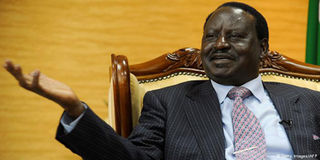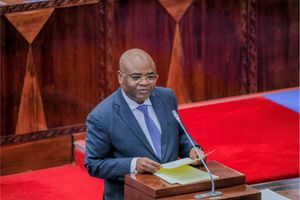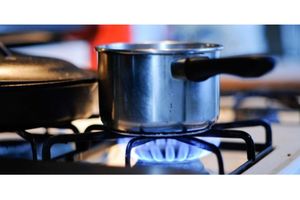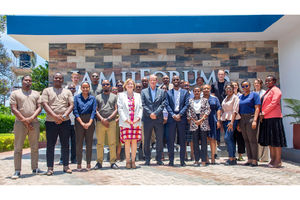Raila: How I was tortured by Moi

In his autobiography The Flame of Freedom, Raila Odinga says he played only a “peripheral role” in the attempted coup designed by then Kenya Air Force officers to depose President Moi. PHOTO | AFP
What you need to know:
- The interrogations continued and, to demonstrate the gravity of the matter, the then Commissioner of Police, Mr Ben Gethi, came in person to question Mr Odinga.
Nairobi. Raila Odinga was tortured and held in horrid conditions after the aborted 1982 coup.
He says in his autobiography The Flame of Freedom that he played only a “peripheral role” in the attempted coup designed by then Kenya Air Force officers to depose President Moi.
He would be detained again in 1989 and 1991 but his detention from 1982, following the attempted coup, lasted nearly six years.
He says of his role in the failed coup: “...we had been quietly engaged in operations designed to educate and mobilise the people in order to bring about the necessary and desired changes in our society — not through violence but through popular mass action. The full explanation of our efforts to bring about popular change will have to wait for another, freer, time in our country’s history”.
As shackled as ever
He refers to Raila Odinga: An Enigma in Kenyan Politics, a book by Nigerian author Babafemi Badejo published seven years ago, and says that what was said about his role in the coup in that book touched off what he considers inordinate umbrage.
“The publication of a biography of me in 2006, where the writer intimated a peripheral role for me in the coup attempt, caused a vindictive outcry — indicating that freedom of speech is, at the time I tell this, my story, as shackled as ever in our country,” he writes.
He then narrates where he was and what he was doing on August 1, 1982, the morning of the coup attempt. He says he was at a friend’s house in Parklands from where he followed the updates broadcast on KBC (then Voice of Kenya) radio.
On August 11, he was picked up from Prof Oki Ooko Ombaka’s house in Caledonia, Nairobi, by officers led there by his driver, whom they had picked up at Mr Odinga’s house in Kileleshwa.
What followed were days of physical and psychological torture at the hands of the Special Branch in their offices on University Way, across the road from Central Police Station, and later at Muthangari Police Station, GSU and CID headquarters.
Mr Odinga recalls the torture meted out by an officer of the Special Branch named Josiah Kipkurui Rono and his team, who were determined to extract from him a confession of what he knew about the coup attempt.
Mr Odinga refused to give in.
He says his adamant position that he knew nothing about the coup attempt enraged Mr Rono, who broke off the leg of a wooden table and slammed it repeatedly on to Mr Odinga’s head and shoulders.
“The blows to my head dazed me and I fell to the floor, and as I lay there, Rono and the others jumped on my chest and my genitals.
Through the blinding pain, I heard them cock their guns, then Rono’s voice: I was either going to speak and tell the truth or I was dead meat. I waited for the end… But it did not come,” he writes.
The beating stopped and Mr Odinga was returned to the cells. For the next few days, he describes agonising torture — including jail in cold water-logged cells, at the hands of the Special Branch. He would attempt to sleep by leaning on the wall but soon the chilling cold — his sweater and shoes had been taken away — would awaken him.
“That is when I learned how long the night is,” he writes.
When he was later moved to the GSU headquarters, Mr Odinga would learn that he had been incarcerated with the dean of the faculty of Engineering at the University of Nairobi, Prof Alfred Otieno, and with Mr Otieno Mak’Onyango, then assistant managing editor of the Sunday Standard.
The interrogations continued and, to demonstrate the gravity of the matter, the then Commissioner of Police, Mr Ben Gethi, came in person to question Mr Odinga.
The author says that Mr Gethi appeared to have had too much to drink and was “disgustingly” chewing away on a roasted goat leg. He ordered the prisoner to write all he knew about the coup attempt.
Mr Odinga slowly wrote out a statement, drawn from a rumour he had heard implicating the then Attorney General, Mr Charles Njonjo, in the coup attempt. An angry Mr Gethi, who was Mr Njonjo’s friend, tore up the statement and demanded another. When he realised that Mr Odinga’s story was not changing, he left.
In the dramatic fashion that characterised the Moi regime, Mr Gethi was sacked two days after that interrogation and was himself detained for 10 months.
Mr Odinga would write more statements in the hands of different interrogators, until six weeks later, when the State decided it was ready to proceed with the case against him and Prof Otieno and Mr Mak’Onyango.
The charges were served to their defence lawyers and the suspects were remanded in custody to await their trial and subsequent fate.
“Remand was a rude awakening,” writes Mr Odinga. The suspects were issued with uniforms that were old and torn, especially between the legs, as part of a psychological scheme to humiliate them. Their diet consisted of no more than half-cooked ugali and what Mr Odinga describes as “vegetable water with a few limp leaves floating around”.
They were not allowed to see anyone or talk among themselves and the uniforms they wore had a big ‘C’ printed across the front, to indicate that they were charged with capital offences punishable by death.
They each stayed in solitary confinement in cells with hardly any sunlight and were issued with one blanket to sleep on and another with which to cover themselves. The lightbulb screwed into the ceiling high above burned 24 hours a day.
They would be escorted twice a day to the toilets and back, individually so that they saw and spoke to no one. The warders spied on each other to ensure that no one helped the prisoners to break the rules.
The three men spent two weeks on remand before they were allowed to have a shower. “The fact that we were on remand and, under the law, presumed innocent, mattered not at all,” Mr Odinga writes.
He captures the humdrum tedium of life in remand, which he calls the “endless sameness of the daily routine”.
“We were continually counted to make sure we had not absconded – counting, counting, counting, all day long. It never ceased.”
Engaging in risky adventures, they designed ways of writing notes to their relatives on the outside, concealing them in their socks or under their tongues, or in other ingenious ways, with anyone going outside for a court appearance being a contraband courier.
Smokers, writes Mr Odinga, went to extreme lengths to smuggle in cigarettes. He says that, from what he saw, had he been a smoker, he would have quit rather than practise such desperation.
After the warders had gone to their stations at night, the remandees would shout to inmates in neighbouring cells, and in this way Mr Odinga discovered that some of those locked up nearby were Kenya Air Force men who had been arrested over the coup attempt and who faced court martial for treason. These prisoners firmly believed in their action against dictatorship and corruption, and they were willing to die for it. Mr Odinga writes that many of them were sentenced to death and that “It was terrible – terrible and heart-breaking.
“They would be taken to court in the morning and would return in the afternoon to tell us quietly that they had been sentenced to death. A few were acquitted and a few imprisoned but many paid the ultimate price.” Finally the day came in January 1983 for Mr Odinga to face 13 charges in relation to the abortive coup of August 1, 1982.
The trial was then delayed and postponed by the prosecution several times, while Mr Odinga’s relatives and friends worked to set up for him the best defence team they could.
The day of the trial was finally set for March 24, 1983.
The prosecution was led by lawyer Sharad Rao (now chairman of the Judges and Magistrates Vetting Board).
Suddenly, the day before the trial was due to begin, Mr Odinga and his two co-accused were asked to collect all their belongings from their jail cells. They were driven to the courts and taken before the then Chief Justice, Sir James Wicks.
Mr Rao announced that he had orders from the Attorney-General to enter a nolle prosequi – that the State no longer wished to prosecute the three.
What followed was dramatic. The three men were released and all the papers were signed, but police officers never left their sides, and as the three exited the court they were bundled into a waiting Special Branch vehicle. The thought of detention immediately crossed Mr Odinga’s mind.
They were driven via a roundabout route to Langata Police Station. At day’s end, they were taken to the Nairobi Area police headquarters, where the then provincial police chief, Philip Kilonzo, served them with detention orders signed by then internal security minister Justus Ole Tipis.
“We, three detainees, arrived at Kamiti about midnight, back where we had started the day – but now we had a new home: the isolation block, the detention camp, the prison within a prison. The next phase of the struggle had begun,” writes Mr Odinga.
He would remain in detention without trial, which was lawful at the time, until February 5, 1988, when he was dramatically released by President Moi.
He would survive the solitude by exercising when he could and reading numerous books that his wife Ida sent him (but which had first to be censored by the authorities). He writes that he extensively studied the Bible, the Koran and other religious material, in addition to numerous other types of books, any kind, he could lay his hands on. He would also do some gardening in the prison plot when the authorities allowed, growing different vegetables. He would serve in Kamiti, Manyani, Naivasha and Shimo la Tewa prisons, all of which had gained brutish notoriety since colonial days.
Mr Odinga’s mother died while he was in detention and he would learn of this and of other deaths of relatives painfully, sometimes months after the event, and he would never be allowed out to attend their funerals, a grim testament to the torture meted out by the regime of the day.
Read more about Odinga’s memoir in The Citizen tomorrow




